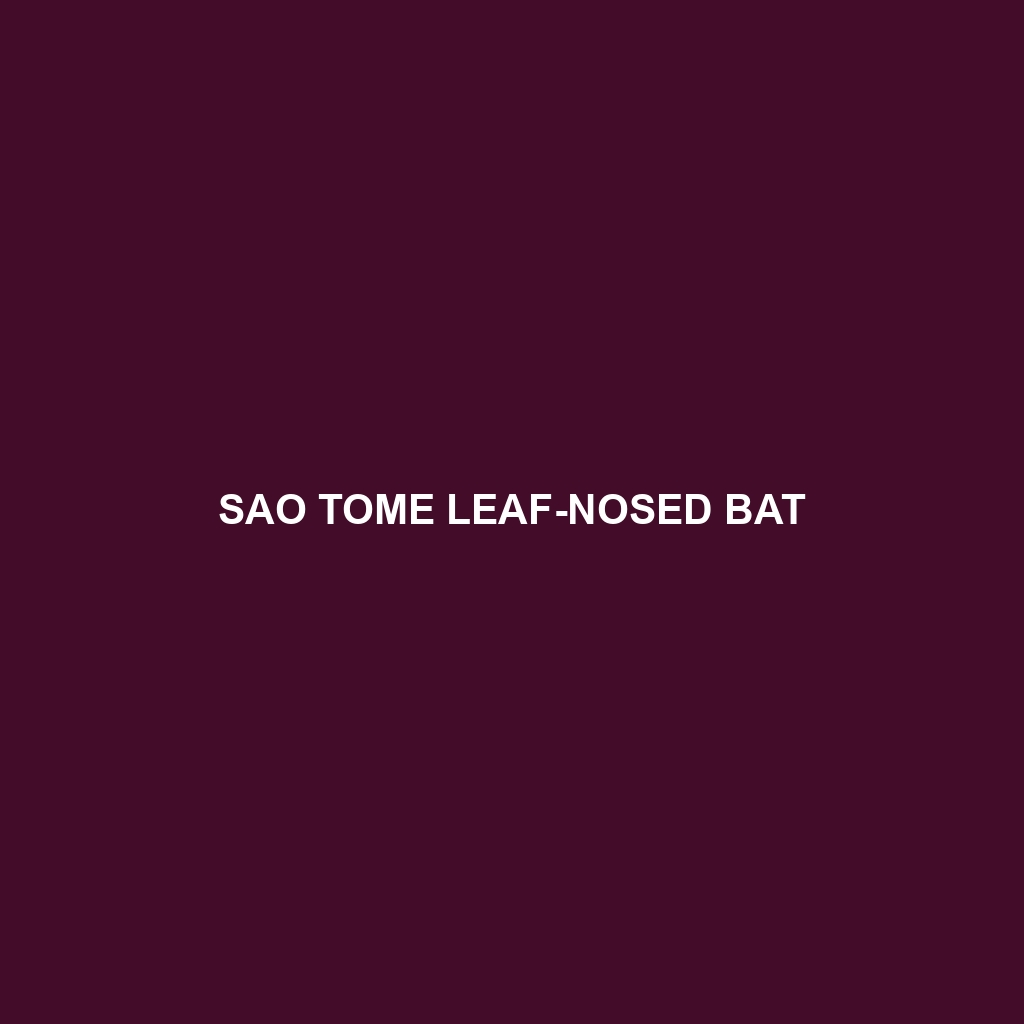Giant Leaf-nosed Bat (Scientific Name: )
Common Name: Giant Leaf-nosed Bat
Scientific Name:
Habitat
The Giant Leaf-nosed Bat is primarily found in the tropical and subtropical regions of Africa. It inhabits a variety of environments, including moist forest areas, savannas, and mountainous regions. These bats tend to roost in caves, abandoned buildings, and dense vegetation, providing them with the necessary shelter from predators and extreme weather conditions.
Physical Characteristics
Giant Leaf-nosed Bats are distinguished by their impressive wingspan, which can reach up to 40 centimeters (15.7 inches) in length. They exhibit a robust body structure with a characteristic leaf-shaped nose, which is used in echolocation. Their fur typically ranges from dark brown to gray, with lighter underparts, and they have large, expressive ears that aid in their nocturnal activities. These physical traits make them easily identifiable among bat species.
Behavior
The Giant Leaf-nosed Bat is known for its social behavior, often being found in large colonies. They are highly vocal, utilizing a range of echolocation calls to communicate and navigate their surroundings. These bats are primarily nocturnal, emerging at dusk to forage for food. Their unique leaf-nose structure aids in their sophisticated echolocation, allowing them to detect prey with remarkable accuracy.
Diet
As insectivores, Giant Leaf-nosed Bats primarily feed on a variety of insects, especially moths, beetles, and other flying insects. They are known for their foraging habits, often flying at high altitudes to capture prey mid-flight. This feeding behavior plays a critical role in controlling insect populations, highlighting their significance in the ecosystem.
Reproduction
The reproductive habits of the Giant Leaf-nosed Bat include a breeding season that typically occurs during the warmer months, coinciding with increased food availability. Females give birth to a single pup, which is nursed for several weeks before becoming independent. The maternal care displayed by these bats involves strong social bonds within the colony, ensuring the survival of the offspring.
Conservation Status
The Giant Leaf-nosed Bat has been categorized as vulnerable due to habitat loss and environmental changes. Conservation efforts are necessary to protect their habitats and ensure their survival for future generations. Ongoing research and local community involvement play vital roles in these conservation initiatives.
Interesting Facts
One fascinating aspect of the Giant Leaf-nosed Bat is its unique ability to adapt its echolocation calls based on prey size, allowing it to hunt a variety of insects effectively. Additionally, these bats are known for their long migrations in search of food sources during different seasons.
Role in Ecosystem
The Giant Leaf-nosed Bat plays a crucial role in maintaining the balance of its ecosystem. By controlling insect populations, they contribute to the health of forest and agricultural environments. Moreover, their droppings serve as natural fertilizers, enriching the soil and promoting plant growth, thereby benefiting other species within their habitat.
